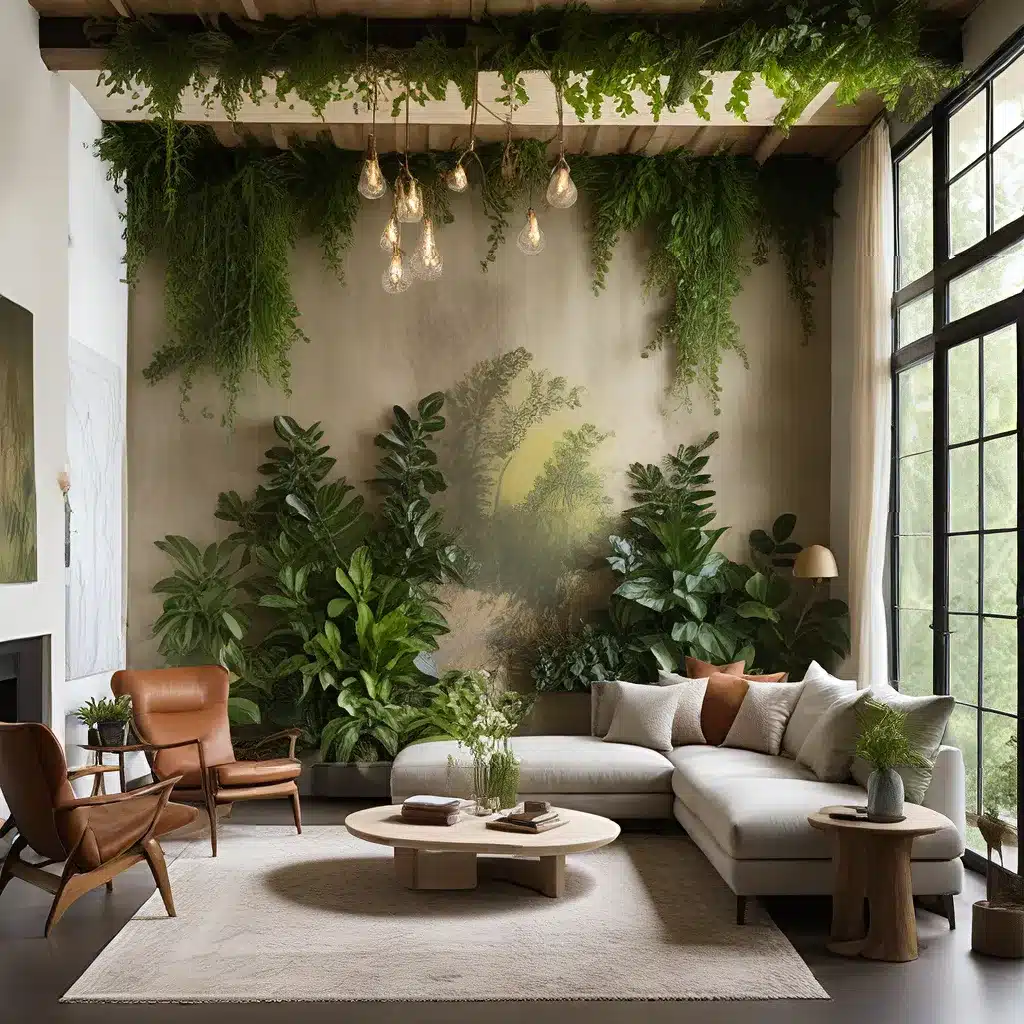
In an era defined by technological advancements and urban living, the yearning for a connection with nature has never been more apparent. Biophilic design, as the name suggests, is the “love for life and nature.” It involves the deliberate incorporation of natural elements, colors, materials, and patterns into our living spaces, creating a harmonious blend of the indoors and the outdoors.
The Rise of Biophilic Design
The biophilic design trend has gained significant momentum in recent years, driven by a growing awareness of the positive impacts that nature can have on our well-being. Research has shown that biophilic environments can have a more significant restorative effect on people, reducing stress, anxiety, and positively impacting physiological responses.
As our lives become increasingly intertwined with technology, biophilic design offers a much-needed counterbalance, providing a sense of tranquility and inner peace. It also aligns with the growing emphasis on sustainable living, as it encourages the use of natural and eco-friendly materials.
Incorporating Biophilic Elements into Your Home
Bringing the essence of nature into your living spaces is not as simple as placing a potted plant on the side table. Successful biophilic design involves a thoughtful integration of various elements that create a multi-sensory experience, fostering a deeper connection between the modern space and the natural realm.
Natural Lighting and Greenery
One of the foundational elements of biophilic design is the strategic use of natural lighting. Allowing ample daylight to flood your living spaces through large windows or skylights can instantly create a sense of openness and connection with the outdoors.
Incorporating potted plants and lush greenery is another essential aspect of this design approach. Strategically placing plants throughout your home can not only add visual interest but also improve air quality and promote a calming atmosphere.
Natural Materials and Textures
The use of natural materials, such as wood, stone, and natural fibers, is a hallmark of biophilic design. These materials not only evoke a sense of warmth and authenticity but also contribute to the overall sensory experience.
Incorporating textured fabrics, organic shapes, and irregular patterns can further enhance the connection to nature. These design elements mimic the fluidity and unpredictability of the natural world, creating a sense of visual interest and serenity.
Color Palette and Aromatherapy
Biophilic design often features a natural color palette, drawing inspiration from the earthy tones of soil, the muted hues of foliage, and the calming blues of the ocean. These colors help to create a soothing and grounding atmosphere within the living space.
Incorporating aromatherapy through the use of natural botanicals, such as essential oils or aromatic candles, can elevate the biophilic experience by engaging the sense of smell. The calming scents of nature can further enhance the overall ambiance and promote a sense of relaxation.
Blending Biophilic Design with Other Styles
Biophilic design can seamlessly integrate with a variety of other interior design styles, allowing homeowners to create unique and personalized living spaces that cater to their individual preferences.
Pastel-Biophilic Harmony
The gentle aesthetics of pastel decor elements complement the natural serenity of biophilic design delightfully. Incorporate potted plants, wooden furniture, ceramic cutlery, and textured fabrics to create a refreshing and welcoming environment.
Accessorize with pastel-colored items featuring floral or botanical motifs, such as cushions, curtains, vases, and wall art. A classic cotton table runner can serve as a grounding backdrop, unifying the dining space and allowing the serveware and cutlery to shine.
Farmhouse-Biophilic Fusion
The farmhouse and biophilic design styles share a common appreciation for natural materials, making their integration a seamless and captivating endeavor. Embrace the rustic charm of wood and stone, and enhance it with leaf-shaped carvings or botanical motifs.
Incorporate handmade decor and 3D wooden textures to reinforce the farmhouse-biophilic connection. Pair floral or botanical print cushions with minimal, similar-hued covers to create a harmonious look. Complete the space with natural scents using incense sticks or potpourri for a tranquil atmosphere.
Scandinavian-Biophilic Harmony
The minimalism and functionality of Scandinavian design align seamlessly with the principles of biophilic design. Start by introducing neutral-toned planters and vases to create a serene backdrop for your natural greenery. Complement this with a muted-tone, geometric-patterned rug to add visual interest while maintaining the connection to the natural world.
By unifying the practicality and minimalism of Scandinavian design with the natural elements inherent in biophilic design, you can create an environment that not only exudes beauty but also elevates the quality of life within your home.
Bohemian-Biophilic Balance
Integrating the free-spirited and eclectic charm of bohemian design with the serene and calming essence of biophilic design requires a thoughtful approach. Incorporate handwoven macrame products to express an artisanal touch while allowing natural greenery to take center stage.
Introduce textured organic art pieces, tufted patterns on home furnishings, and natural plant fiber offerings to create a warm and grounded atmosphere that seamlessly blends the two design philosophies.
Embracing the Power of Biophilic Design
In an increasingly technology-driven world, biophilic design emerges as a guiding light, offering a means to reconnect with the natural world and enhance our overall well-being. By incorporating these nature-inspired elements into our living spaces, we can create environments that not only please the senses but also promote mental and physical rejuvenation.
Whether you choose to embrace the pastel-biophilic harmony, the farmhouse-biophilic fusion, the Scandinavian-biophilic harmony, or the bohemian-biophilic balance, the key is to personalize your space and find the design approach that resonates most with your individual preferences and lifestyle.
As you embark on your journey to incorporate biophilic design into your home, remember that the true essence of this trend lies in fostering a deep and meaningful connection with the natural world, ultimately enriching your living experience and fostering a sense of biophilic bliss.

